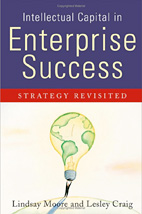If recent news is any indicator, patents are extremely valuable assets! During 2011, Nortel Networks Corporation sold 6,000 patents for $4.5 billion to a technology consortium that included Apple, Microsoft and RIM. Shortly thereafter, Google bought, in one of the largest patent deals in history, more than 24,000 patents and patent applications from Motorola Mobility for $12.5 billion. Since 2011, IBM has sold more than 2,000 patents to Google for an undisclosed price. And now, Kodak, under the mandate of its Chapter 11 bankruptcy filing, is trying to sell 1,100 of its patents for $3 billion.
Does Google’s Purchase of Motorola Suggest It Is Changing Its Strategy?
In a recent editorial in the Wall Street Journal one commentator on the world of business puzzled that Google would so violate the patent rights of their competitors with their Android mobile operating system. He mused incredulously, that Google seems to assume that their competitors in the smartphone market don’t have a right to exclude them from using their intellectual property.
Patenting Food Products and Manufacturing Processes
Many manufacturing companies overlook the opportunity to patent aspects of their products or specialized manufacturing processes. This is especially true in the natural products industries, where unusual ingredients are often mixed together and specialized production processes are increasingly required to make food products and dietary supplement products that are acceptable to consumers. In most natural product categories, it takes substantial innovation for manufacturers to be able to produce successful functional and natural food or supplement products.
Ethical-Regulatory Compliance
Recent ethical, regulatory, and legal responses to enterprise wrong-doing is driving a sea change throughout organizations in the United States. There are many new regulatory guidelines in place, evidencing the imperative to drive ethical behavior and establish integrity across both public and private organizations.
Towards a Strategy of Valuing Patents as Intellectual Capital
Patents are a major force in the world economy, and one of only a few metrics commonly employed to gauge the tides of new ideas and innovation that are driving our economy. Even with the present declining rates of R&D investment, leading nations spend over $1 billion dollars each day generating intellectual property.




 As the knowledge-based economy expands, the companies and individuals that possess intangible intellectual assets, such as intellectual property, will need specialized expertise, strategic thinking, legal experience, and the wisdom necessary to manage intellectual assets.
As the knowledge-based economy expands, the companies and individuals that possess intangible intellectual assets, such as intellectual property, will need specialized expertise, strategic thinking, legal experience, and the wisdom necessary to manage intellectual assets.